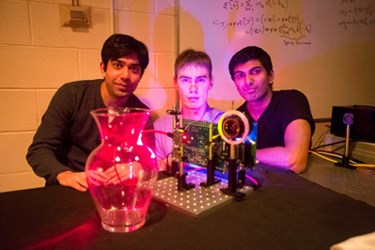New Nano-Camera Operates At Speed Of Light, Could Improve Medical Imaging
By Sara Jerome,
@sarmje

The Massachusetts Institute of Technology (MIT) Media Lab has developed a camera that can capture 3D images at the speed of light, paving the way for more advanced medical imaging.
For instance, the camera “could help ophthalmologists when they want to create an image of a patient’s eye without having to shine a bright light in someone’s eye,” BBC News reported.
The invention is builds on time-of-flight technology, “which determines the location of an object by calculating how long it takes a light sensor to bounce light off an object and return to the sensor,” according to Digital Trends.
“We use a new method that allows us to encode information in time,” Ramesh Raskar, an associate professor in the MIT Media Lab’s Camera Culture group, said an announcement from the lab. “So when the data comes back, we can do calculations that are very common in the telecommunications world, to estimate different distances from the single signal.”
Similar technology is already in use in other applications. “The camera technology already existed and is similar to the lidar system used by Google for its Street View service,” BBC News said. The MIT camera “borrowed the principles” from the lidar system but stretched the technology a step beyond, the researchers said.
“A conventional lidar system would require about 100 times as many photons to make a similar image to the one the team captured, which means the system could provide ‘substantial savings in energy and time’,” according to the BBC News report.
The camera only costs $500, according to MIT.
It “probes the scene with a continuous-wave signal that oscillates at nanosecond periods,” the MIT release said. “This allows the team to use inexpensive hardware — off-the-shelf light-emitting diodes can strobe at nanosecond periods, for example — meaning the camera can reach a time resolution within one order of magnitude of femtophotography.”
The 3D camera could also be used in “collision-avoidance detectors for cars, and to improve the accuracy of motion tracking and gesture-recognition devices used in interactive gaming,” according to MIT.
The researchers also say that interested individuals can build their own version of the camera.
“If you want one right away, you will have to build one,” they wrote on a page devoted to research on the camera. Those with the relevant skills “can probably build one following the details in the technical paper.”
Image credit: Bryce Vickmark
